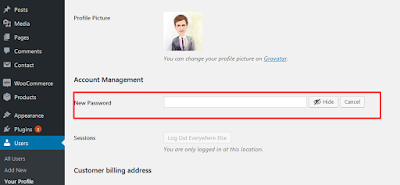Follow the following steps:
1. Create all of the folders/file in the following path if they do not already exist.
app/code/local/Mage/Catalog/Block/Product/New.php
2. Put the below code on New.php
<?php
class Mage_Catalog_Block_Product_New extends Mage_Catalog_Block_Product_List
{
function get_prod_count()
{
//unset any saved limits
Mage::getSingleton('catalog/session')->unsLimitPage();
return (isset($_REQUEST['limit'])) ? intval($_REQUEST['limit']) : 12;
}// get_prod_count
function get_cur_page()
{
return (isset($_REQUEST['p'])) ? intval($_REQUEST['p']) : 1;
}// get_cur_page
/**
* Retrieve loaded category collection
*
* @return Mage_Eav_Model_Entity_Collection_Abstract
**/
protected function _getProductCollection()
{
$todayDate = Mage::app()->getLocale()->date()->toString(Varien_Date::DATETIME_INTERNAL_FORMAT);
$collection = Mage::getResourceModel('catalog/product_collection');
$collection->setVisibility(Mage::getSingleton('catalog/product_visibility')->getVisibleInCatalogIds());
$collection = $this->_addProductAttributesAndPrices($collection)
->addStoreFilter()
->addAttributeToFilter('news_from_date', array('date' => true, 'to' => $todayDate))
->addAttributeToFilter('news_to_date', array('or'=> array(
0 => array('date' => true, 'from' => $todayDate),
1 => array('is' => new Zend_Db_Expr('null')))
), 'left')
->addAttributeToSort('news_from_date', 'desc')
->setPageSize($this->get_prod_count())
->setCurPage($this->get_cur_page());
$this->setProductCollection($collection);
return $collection;
}// _getProductCollection
}// Mage_Catalog_Block_Product_New
?>
3. Put bellow lines on app/design/frontend/default/your_theme/layout/catalog.xml
<reference name="content">
<block type="catalog/product_new" name="product_new" template="catalog/product/list.phtml">
<action method="setCategoryId"><category_id>10</category_id></action>
<action method="setColumnCount"><column_count>6</column_count></action>
<action method="setProductsCount"><count>0</count></action>
<block type="catalog/product_list_toolbar" name="product_list_toolbar" template="catalog/product/list/toolbar.phtml">
<block type="page/html_pager" name="product_list_toolbar_pager" />
<action method="setDefaultGridPerPage"><limit>12</limit></action>
<action method="addPagerLimit"><mode>grid</mode><limit>12</limit></action>
<action method="addPagerLimit"><mode>grid</mode><limit>24</limit></action>
<action method="addPagerLimit"><mode>grid</mode><limit>36</limit></action>
<action method="addPagerLimit"><mode>grid</mode><limit>48</limit></action>
<action method="addPagerLimit" translate="label"><mode>grid</mode><limit>all</limit><label>All</label></action>
</block>
<action method="addColumnCountLayoutDepend"><layout>one_column</layout><count>6</count></action>
<action method="setToolbarBlockName"><name>product_list_toolbar</name></action>
</block>
</reference>
4. Put bellow line on CMS page
{{block type="catalog/product_new" column_count="6" products_count="0" name="home.catalog.product.new" alias="product_homepage" template="catalog/product/list.phtml"}}
Njoy :)














 ';
}
';
}


